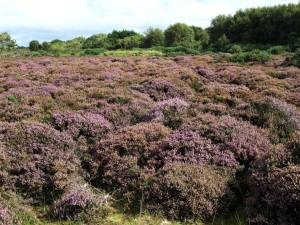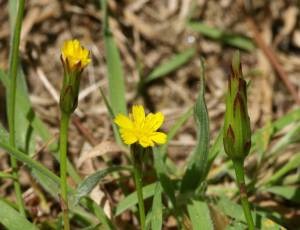Dr Phil Smith’s Wildlife Notes
August 2007
August is the month of the “Glorious 12th” – not particularly relevant to our grouse-free coastline you may think, but we do have the Red Grouse’s food-plant, Heather (Calluna vulgaris), and in some abundance. Thanks to recent work by the National Trust at Larkhill, Natural England at Montagu Road and the Lancashire Wildlife Trust at Freshfield Dune Heath, we can enjoy glorious vistas of purple Heather, released from the smothering effects of dense gorse and birch-scrub. Lowland heath can only be maintained by human intervention; otherwise it quickly reverts to monotonous scrub-woodland with the inevitable loss of much of its characteristic wildlife. For example, recent surveys by volunteers of the North Merseyside Amphibian & Reptile Group show that Freshfield Dune Heath Nature Reserve now supports about 200 Common Lizards (Lacerta vivipara), a creature just added to the UK list of Priority Species for conservation action because of its national decline. The reserve also has an extraordinary variety of plant-life, some 297 different kinds according to the latest calculation. More good news is that a series of ponds recently dug on the nature reserve with the help of the Environment Agency have been colonised by Water Voles (Arvicola terrestris). And let us not forget that this land is now open to the public for the first time in over 60 years!

Another visually stunning wild flower that puts in a welcome appearance at this time of year is the Grass-of-Parnassus (Parnassia palustris). Not a grass at all but a relative of the saxifrages, its starry white blooms can be seen in drifts in dune-slacks all along the coast, especially where grazing by Rabbits or livestock controls the taller-growing plants. This species is so abundant here that it is easy to forget that it is officially listed as “endangered” in Lancashire. Grass-of-Parnassus was also a favourite of the Victorians. Writing in 1883, E.D. McNicholl observes: “There are localities among the sandhills beyond Birkdale where, in favourable seasons, so vast is the quantity of the Parnassia that the whiteness of the ground may be compared to that given by daisies to the sward.” It is gratifying that, over 120 years on, this description still applies.
In my June notes, I mentioned the discovery of a rare plant, Smooth Cat’s-ear (Hypochaeris glabra) at Formby Point. This led me to search more widely and, to my amazement, I found it on almost every area of suitable habitat visited. This tiny annual likes sparsely vegetated acid grassland, usually heavily Rabbit-grazed. So far, I have recorded 24 colonies between Lifeboat Road and Ainsdale National Nature Reserve. These contain over 2600 plants, a population explosion that is difficult to explain, bearing in mind the fact that this is a nationally declining and “Vulnerable” species which our most celebrated botanist, the late Vera Gordon, never saw in over 60 years’ recording on the Sefton Coast. Presumably, the record-breaking weather conditions this year are responsible for the changing fortunes of the Smooth Cat’s-ear, one of many local plants and animals apparently responding to climate change.

